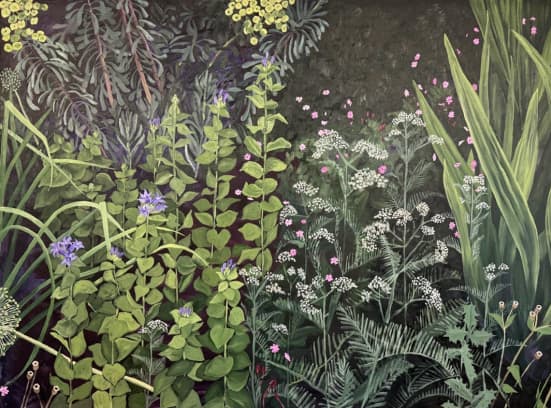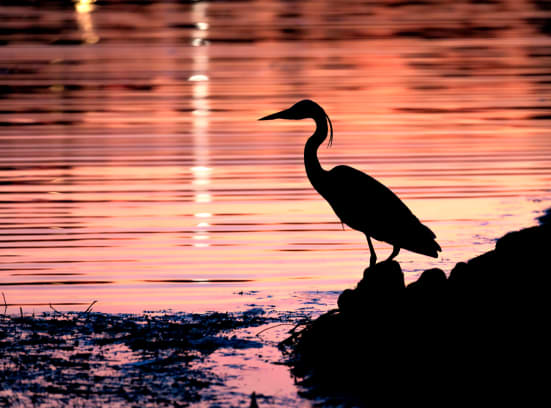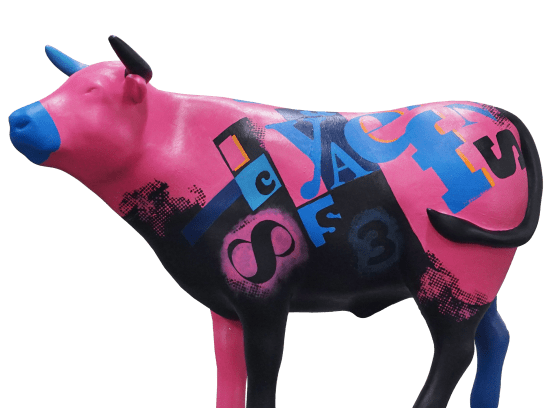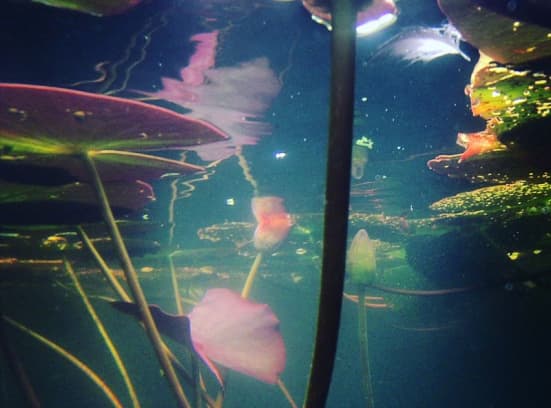Artist Rose Bradford is the winner of the 2020 Artweeks Mary Moser Award, an annual award intended to help develop the career of a professional artist who has taken up art as a second career later in life. Artweeks festival director Esther Lafferty, visited her to find out about her fine art prints and etchings.
After training initially at Hornsey College of Art, Rose worked as a teacher for many years with children from nursery school age through to the final year of primary school, specialising in reading skills. It was only when her own children were grown-up that she returned to college to study fine art and later set out to carve a new career for herself as a printmaker.
“Art was always essential for me”, says Rose who has drawn for as long as she can remember, and credits art college with changing her life, offering her sixteen-year-old self an escape from a post-war childhood in London.
While teaching by day, Rose describes evening classes in life-drawing and print-making at the Working Men’s College in the middle of Camden. Founded in 1854, it is the oldest surviving adult education institute in Europe and enjoyed support in the nineteenth century from Dante Gabriel Rossetti and John Ruskin. “It was in their printing department that I began etching,” says Rose. “I loved the materials and the potential of clean lines; I think different people have an affinity to different materials and mine is metal!” To create an etching, Rose first prepares a copper plate with wax (ground) on it and then draws through the wax before placing the plate into acid to ‘bite’ the line into the metal. The plate will often be ‘aquatinted’, a process using powdered resin to produce areas of tonal shading. It will be ‘bitten’ several times before it is ready for the first ‘proof’ (print) to be ‘pulled’ (put through the press).
It is people, and some animals, who populate her pictures. “As a child I drew what I saw,” she smiles, “and there wasn’t an awful lot of landscape in London! My people were both real and imaginary. I was also inspired by the imagery in illustrated story books and of classic illustrators like Arthur Rackham.”
Rose has also spent a chapter of her adult life in Devon and Somerset, a real contrast to the hustle and bustle of London which she’d always known. “I love both,” she comments. “I’m happy on a tube train and in the middle of a field. The countryside is beautiful, and the fresh clean air is wonderful but equally it feels good to be in a crowd and to know there are other people around you.”
Rose’s most recent series of work shows the Virgin Mary and imagined moments in her life. “Despite being so important in Christianity, Mary is often invisible or at best one-dimensional in the bible stories,” explains Rose. “It’s interesting to see the influences of history and culture over time. “The idea of virgin goddesses actually goes way back. In Egyptian culture for example there was a virgin mother goddess, Neith, 7,000 years ago.”
In one picture Mary is getting a tattoo which, apparently, was both forbidden and allowed in the bible depending upon the chapter you read. “People used to have themselves tattooed with the symbol for ‘Yahweh’, one of the Hebrew words for God, as a symbol of their dedication, which interestingly was then written in the shape of a cross,” she explains. “People have been tattooing one another for more than 5,000 years and the importance and meaning of the practice has changed so much. Even now, attitudes to tattoos are different to those just a couple of decades ago. I find out so much when I am creating a new series of work.”
In another image, Mary is shown with a chicken, and in the background there’s a church spire with the cockerel-shaped weather-vane rising into the sky. “Chickens were venerated in many places,” she continues, “and in the 9th century Pope Nicholas decreed that every church should have a cockerel on it and that’s why the classic weather-vane is that shape.”
In this way, Rose’s art shows the little connections between various things in the world, often linking snapshots of time in the everyday with something deeper in the history of the world, or social struggles. Other pictures show Mary baking bread, reclining with Joseph and enjoying a paddle: “She must have done these things too!”
In another, Mary is contemplating 13 apostle spoons, which were popular from the sixteenth century in England. Each bears an image of an apostle on the handle, symbolic of the Last Supper. “Some of Jesus’ apostles were apparently women, but they seem to have been knocked out of the history books,” she comments. “I wondered what Mary would have thought of the apostles at the last supper – did she get on with them? She had ever such a lot to cope with, and however gentle, must also have been extremely tough. She had other children too. Her sons included James who is referenced in the bible and daughters who are nameless and little mentioned.”
Other women in Rose’s work depict the disabled, often confined and unheard. In one print, a woman is lying down in the park because, for them, a ‘walk in the park’ is not an option. In Bitter Oranges, a beautiful woman lies like Sleeping Beauty surrounded by sharp thorns, for example.
Rose’s protagonists often have a certain tilt of the head and a meek and mild composure that may – or may not – represent the weight of a history of male oppression or other very human challenges. Despite this, there’s no struggle or anguish evident in her art: her prints are delicate and friendly, recognising and gently celebrating the enormous underlying strength that people can and do find within themselves. The result is a pleasing clarity teamed with a lightness of touch, a simple grace and a sense of peace and contentment. These characteristics reflect – it seems to me – Rose herself. She was given the moniker ‘Quiet Rose’ at college and she continues to use it, quietly.
In other pictures, her birds and animals are full of character. “There’s beauty in so much of the everyday if you have the time to appreciate it,” Rose comments. “I have sketchbook after sketchbook of garden birds – and pigeons and squirrels on the window-sill! They’re such lovely shapes to draw and watching how they interact is fascinating: you can uncover the pecking orders between the exuberance of youth and the experience of old age!”
You can see more of Rose’s work on her website







